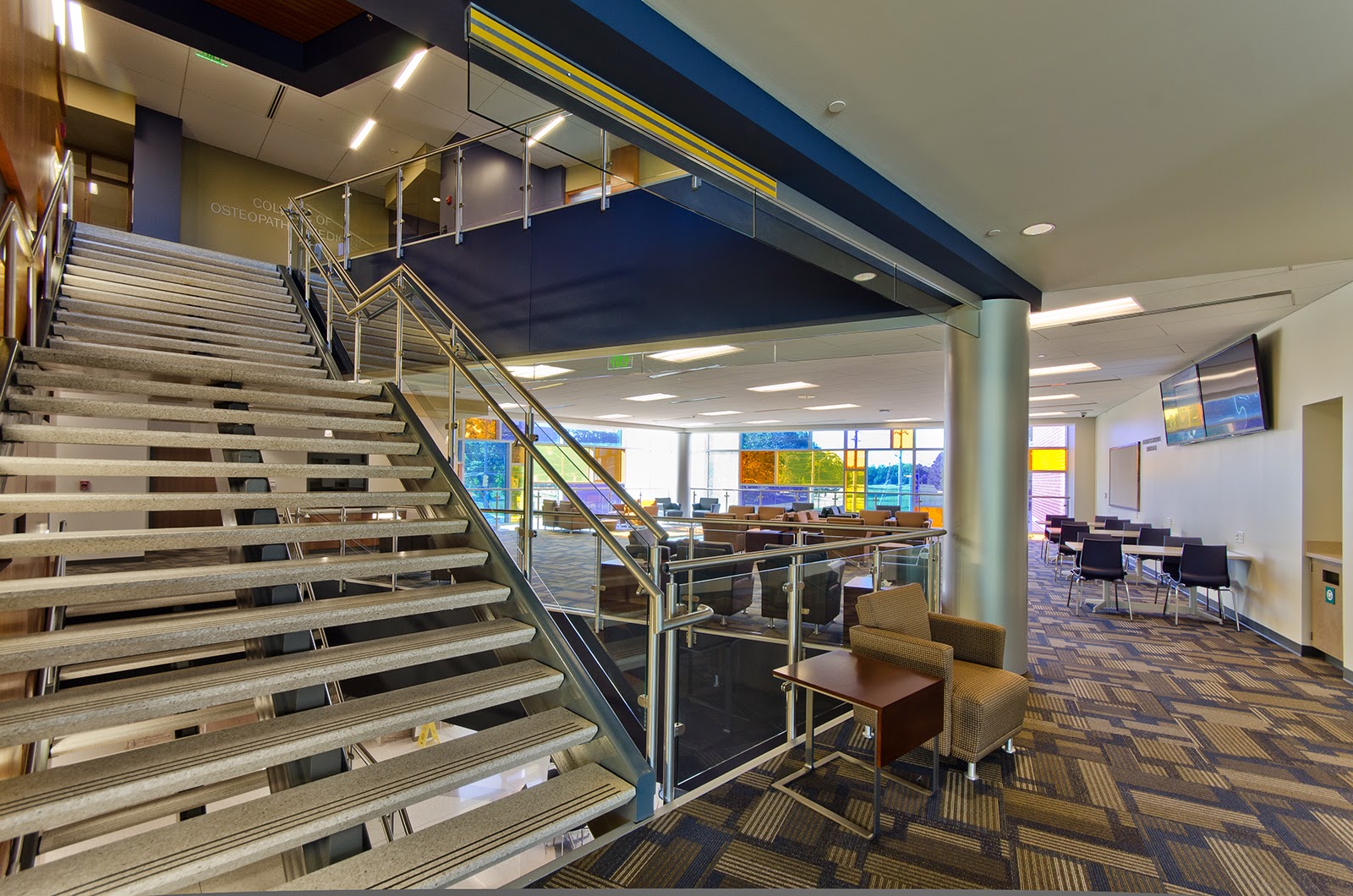IUPUI
Rotary Building Renovation for Indiana University
 |
| South facade |
The Rotary building on the IUPUI Campus in Indianapolis was originally constructed in 1931 as a home for orphaned and ill children. It was later turned over to IU for academic and administrative purposes. The facility is one of the few remaining historic structures on the IUPUI campus. Its location offers the building as a link between the new Eskenazi Health Complex and the IU School of Medicine. The purpose of the project was to renovate the existing facility into medical offices and support spaces for Indiana University.
Some of the key design opportunities for this project were:
- Re-establish the original 2nd floor balcony terrace overlooking the therapeutic gardens.
- Replace existing windows and create a more efficient building envelope.
- Increase amount of natural light into the building.
- Incorporate grand communicating stairway.
- Open top floor ceilings to create dramatic voluminous space.
- Integrate high-performance building systems within the existing building shell.
- Achieve LEED Silver certification.
 |
| Monumental stair at 1st floor |
The renovation construction was completed over the summer of 2014. The facility recently was awarded LEED Silver certification, achieving 57 points. The scores for the renovation project were as follows:
- Sustainable Site: 16 out of 26 possible points
- Water Efficiency: 4 out of 10 possible points
- Energy & Atmosphere: 18 out of 35 possible points
- Materials & Resources: 4 out of 14 possible points
- Indoor Environmental Quality: 9 out of 15 possible points
- Innovation & Design Process: 3 out of 6 possible points
- Regional Priority Credits: 3 out of 4 possible points
The renovations to this existing facility have provided IU with a great office space that meets their programming needs and sustainable design goals. The urban location contributes several points to the project. The renovations included energy efficient mechanical systems, upgraded electrical power, lighting and data.
This project's new use allows it to maintain its presence as a jewel on the IUPUI campus. For more information on the project visit:
More project photos:
 |
| Conference Room entrance |
 |
| Monumental stair |
 |
| Monumental stair |
 |
| Private conference area on 3rd Floor |
 |
| Terrace overlooking therapeutic garden |














